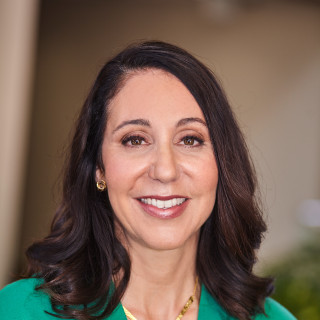
This past month I was both an attendee and speaker at the 87th annual scientific meeting of the American Society of Plastic Surgeons. Plastic Surgery The Meeting 2018 took place in Chicago from September 28th - October 1st and was attended in record numbers by plastic surgeons both nationally and internationally.
A colleague, who is an established surgeon with expertise in breast surgery, was unable to participate in one of her invited panels due to a committee conflict. Her effort to ensure that her replacement maintained the diversity of the panel as the only female speaker led to my assuming the speaker role. Although I have previously spoken at our scientific meeting, it has been in the context of my military experience or “soft” topics such as work-life balance or implicit bias. Speaking on a breast implant panel represented my first opportunity to present on a core topic with recognized experts and provide an alternative perspective.
In preparing for the meeting, I reflected on my past experiences at meetings and what I was looking forward to at this annual gathering. This year’s meeting offered more than 250 opportunities for aesthetic and reconstructive plastic surgeons to gain valuable continuing medical education and improve patient care, safety and outcomes. There were over one thousand presentations over the course of the 4-day conference as plastic surgeons from all over the globe joined together to learn about cutting-edge innovations, exchange new ideas with colleagues, and network with fellow surgeons and allied health professionals. Nearly four thousand medical professionals from across the globe arrived in Chicago to participate in the largest meeting held in ASPS history. In addition to educating others, speaking at the meeting provides recognition for investigators and experts who work in the field of plastic surgery.
Numerous studies in the medical and scientific literature have demonstrated that the opportunities for women to participate as research presenters or expert panel members are significantly lower than that for their equally accomplished male counterparts. As a woman plastic surgeon, I have certainly attended conferences dominated by “manels” — panels in which no women surgeons were speaking. Although the content was valuable, in a field where over 90% of our aesthetic patients are women, I wondered why there was a lack of female perspective. The reason for male-dominated scientific conferences is multi-factorial and somewhat parallels the discrepancy in female leadership at academic institutions and professional societies. Having all-male sessions can send a message that the field has few women and that the upper echelons are dominated by men. This lack of role models and incomplete reflection of the true audience perpetuates the gender bias. Importantly, acknowledgment that there exists a lack of diversity in panel speaker gender allows for education of our professional societies and the development of strategies to remove these barriers. Actively increasing the diversity of those who are recognized at the podium taps into the breadth of expertise available and elevates the quality of the meetings for all attendees.
The leadership of ASPS and women plastic surgeons have informally made a concerted effort to encourage participation by women to speak at our meeting. The program committee thoughtfully reviewed immediate past presenters to ensure current relevance, positive feedback on CME assessments, and audience engagement. Additionally, women plastic surgeons have increased their presence in leadership. As co-chair of the Women Plastic Surgeons committee, I have witnessed the enthusiasm with which women have volunteered themselves and each other to various committees and presentation opportunities to ensure our representation in a male-dominated field. Women represent 14% of ASPS members and a growing number of residents in training so there are accomplished female surgeons available to present. Employing this informal process has contributed to a dramatic increase in the number of women speakers at our 2018 meeting. In 2017 there were 458 presenters, ninety-three of which were women, representing 20% of the speakers. At this year’s meeting, the total number of female presenters increased 56% with 145 female speakers. Women represented approximately 25% of the presenters. For the first time in anyone’s memory there was an all-female panel discussing the important topic of Breast Implant Associated ALCL. This is critical for those of us fortunate to speak — your work is recognized, you are more likely to make connections and be invited to speak again. In the future, an ongoing effort to maintain this strong showing should be cultivated. A tried and true formal way of ensuring this is to include at least one or several female surgeons on the program committees. Their informal network can be invaluable in sourcing excellent speakers that just haven’t had the exposure or possess the connections to be invited. As we applaud our success with representing gender diversity at our annual meeting we should continue to strive for the best quality in our programming. This means tapping into all our talents.
Katerina Gallus MD FACS is a board-certified plastic surgeon and Navy veteran who co-owns Restore SD Plastic Surgery, a private practice in San Diego, CA. She considers it a privilege to live and work in Southern California and only go to Chicago (or anywhere else, except maybe Hawaii) for conferences.






